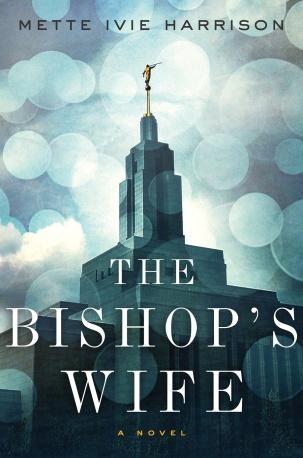
It’s been more than 10 years since I’ve read Mormon fiction and for good reason. Every Mormon fiction book that I have encountered the characters were boring and not compelling, the themes would be just warm fuzzy platitudes, and the endings neat, tidy with 100% closure—typical of what Deseret Book customers want.
It’s hard writing Mormon fiction well. Why? Part of the reason is the culture. Instead of authors using Mormonism as a backdrop, or as context, it usually is a crux and mainstay of things, and then you get into how Mormonism is portrayed. And depending where a person is the Mormon spectrum, Mormons will have a very strong opinion about it.
The Bishop’s wife is about Linda Wallheim who is, you guessed it, the bishop’s wife in a ward in Draper, UT. She’s not your typical bishop’s wife in Utah, at least I haven’t ever encountered a bishop’s wife who is forward thinking, progressive, and a feminist. Despite Linda’s qualms with the gender dynamics of the Church, she is devout to her faith and to her unofficial calling as the bishop’s wife by bringing food to those in need, helping out with funerals, and providing a listening ear.
It all starts with the a sister in the ward gone missing, Carrie Helm, and all suspicions lead to her controlling, over-zealous, self-righteous husband, Jared. Meanwhile Linda befriends a fellow member of the ward named Anna Tortensen. Anna’s has been married to her widower husband Tobias for 30 years, who is now on his deathbed. Linda goes into the Tortensen’s shed to help organize and clean things up and finds a pink dress with a possible blood stain at the back of the neck. It belongs to Tobias’ first wife. Also in the Tortensen’s garden, Linda finds even more evidence that Tobias’ wife may not have died of cancer after all, but was murdered. Are there possibly TWO murderers in Linda’s ward? Dun Dun Dun!
So who is this book for? I think non Mormons could read it without being confused or not have enough context about the Mormon culture. Harrison goes into great detail explaining the nuances and beliefs of Mormons.
That said, Harrison pulls out all the stops on just about every controversial subject about Mormons: the women’s position in the Church, blacks and the priesthood, homosexuality, polygamy and some controversies surrounding Joseph Smith. I didn’t necessarily disagree with the statements, but at times the commentary and feminist frosting was laid on thick, which probably won’t be palatable your average faithful Mormons. However, I could see Mormons who are more liberal and progressive nod their heads and say “amen” so some of Harrison’s passages.
Also I could see many church members getting defensive because of the extremist ideas some of the characters have, that non-Mormon readers my assume that all members think that way. Most Mormon men aren’t ultra controlling misogynists, and the majority Mormon women don’t feel great disparity in the Church.
As far as the murder mystery, I really enjoyed it. It had a lot of twists and turns where I was constantly second-guessing myself, and as per all murder mysteries, it’s who you least expect.
One of the biggest things I look for in fiction is verisimilitude. Does the dialog come off cheesy and contrived? Are the characters dynamic? Does the book showcase a facet of the human experience? I feel that Harrison did a decent job trying to obtain some sense of realism, especially within Mormonism. People, even Mormons, question their faith when encountering with some of the historical aspects of the Church, the folklore teachings that aren’t doctrinal yet prevalent, and highly esteemed members can sometimes get away with egregious sins. The Church as an institution isn’t perfect and members have faults. Even the suspects/murderers weren’t black and white, they were muddied and gray with tidbits of good and evil in them. Isn’t that how people really are?
Again, it’s hard to write about Mormons, but I like how Harrison used Mormonism within the context of the novel. Gender equality has been a hot subject lately, and for those who are interested in Mormonism and gender issues within the Church wrapped around a murder mystery, will enjoy it.

